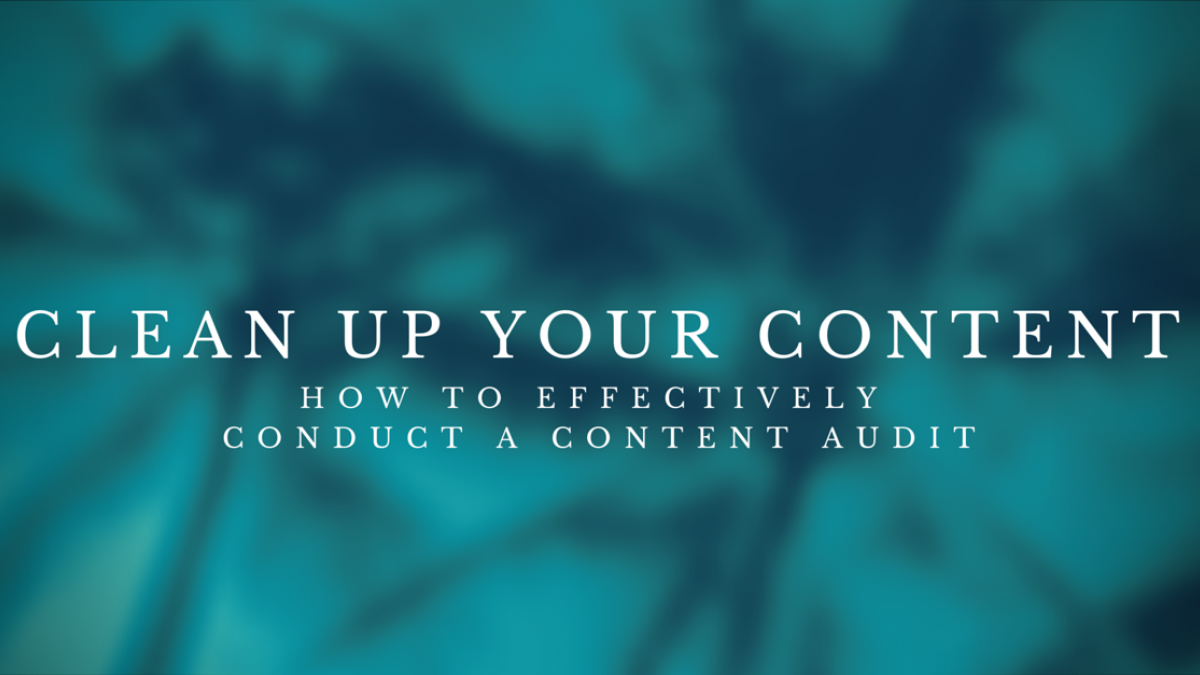
Clean Up Your Content: How to Effectively Conduct a Content Audit
Every so often a website needs a spring cleaning, dusting off of your content pages and taking a good, hard look at whether the current content meets your needs. In essence, a content audit is similar to cleaning out your closet, the closet in the hall that you put everything in when guests come over and then forget to take it out again.
A content audit is a good way to improve and update your website. It offers a systematic way to review all of the content in order to thoroughly examine it without missing anything.
What a Content Audit Can Accomplish
A content audit can help you discover several important issues including:
- Content needing better writing or editing
- Duplicate or overlapping content
- Outdated content that needs eliminating or revising
- Gaps in content
- Keyword strategies that work or do not work
- Ways to leverage stronger content
- Value of a website
- Marketing opportunities
- Potential to help a client site
Why are You Auditing?
Before you audit your site, you should figure out exactly what you want to accomplish from the audit. A content audit can be performed for many reasons, primarily to document all of the content on a site. However, you can audit a site to better understand it or determine what is missing from the existing content.
Content audits are also more crucial with larger sites, because smaller sites can be visually audited. With larger sites, it is harder to keep track of all of the pages and when they have last been updated, revised or removed. If you have a retail site, and it is still displaying last year's out-of-stock inventory, then you are losing sales. Therefore, regular audits will catch those pages that have slipped through the cracks and repair or remove them.
Performing the Audit
1. Collect a list of all the URLs on the site.
The first step is the gathering of data by making a list of every page that needs to be looked at and putting them on a spreadsheet. You can use one of many tools to do this including Google Analytics, Google Webmaster Tools, Content Analysis Tool or Screaming Frog. You can also enter the information by hand, however if you have more than a few pages, that can become tedious.
2. Input the URLs into a Tool to Find Key Performance Indicators (KPI)
Once you have the list of URLs, you can get started. Using a tool such as URLprofiler, find all of the KPIs such as word count, keywords, tags, SEO metrics, description, author, attached files, outgoing links and other indicators and upload the information using the tool.
3. Analyze the Content
Analyzing the content takes time. This task can take days for larger sites. You need to go through the data from each page, and examine the page itself to make a decision. Are you going to keep it as is, improve it or remove it? You can also take more than one page and consolidate them to be more effective.
4. Research Keywords
Keyword research that is done at the onset of a site is not always going have the same results forever. Language changes, trends change and issues that drive customer patterns change. While you are researching, you can determine if all of the relevant keywords are being used properly and whether some keywords are driving traffic to the wrong pages on your site. Keyword research will offer you areas that are working well and some that need improvement.
5. Fill in the Gaps
If your keyword research has provided a list of keywords that do not have corresponding pages, then you need to create new content to match to them. New content can go on existing pages or new pages can be developed.
The first step of new content creation is developing ideas for the needed content. Once the concepts are decided, then you can hire a content creator to write or produce the content.
6. Create a Content Strategy
A content strategy outlines the actions that need to be taken to bring the site up to par. Each strategy is customized according to the site it references. A good content strategy will become an action plan that includes each action that will be taken. Actions include:
- How to optimize existing content
- What new pages need creation
- What pages will be removed
- What pages are being moved or redirected
- Any other revisions that need to be made
- How to clean up any remaining content issues
Customizing the Content Strategy
Depending on the site size and issues discovered during the content audit, the strategy will differ. For instance, new websites may need keyword research and content creation primarily while older sites may have too many thin pages or outdated content. Some sites audits may just require a documented and annotated listing of all of the content on the site for future reference. Each individual site will point the strategy in the direction the site needs most.
Conducting a content audit is a worthwhile exercise for any site. It can improve the performance of the site in the search engines, and point out opportunities to grow a business or create a marketing plan. Conducting the audit takes patience, and a willingness to dig into the details and search for clues. The result is a guide that will help with any upcoming website changes that are planned for the future.

